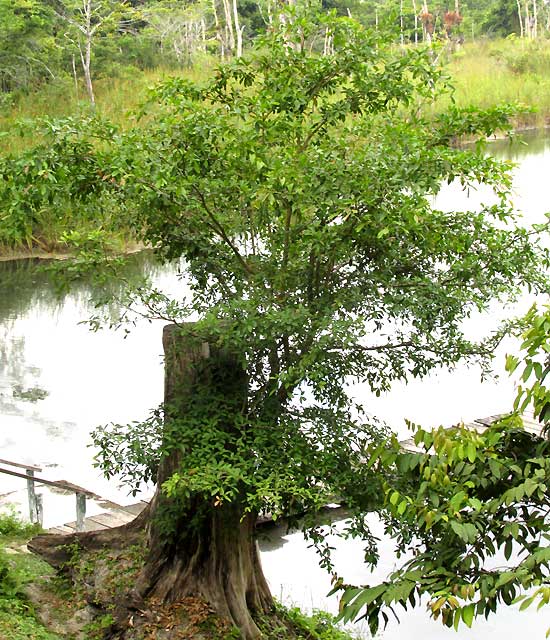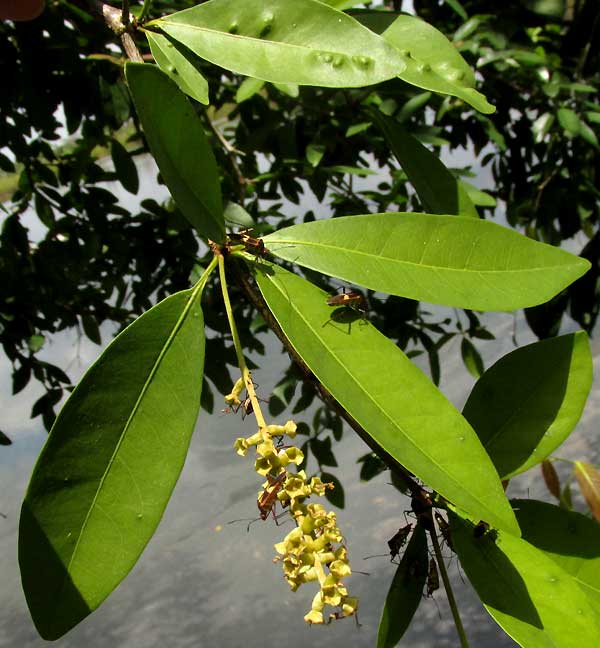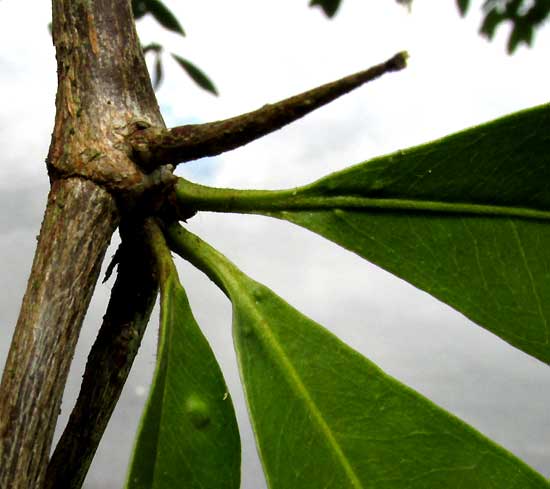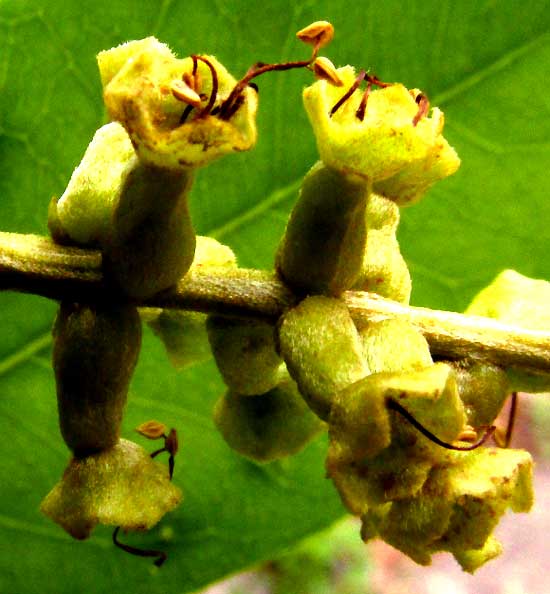Excerpts from Jim Conrad's
Naturalist Newsletter
Entry with notes from a March 28, 2019 camping trip in El Rosario National Park, Petén department, GUATEMALA, MÉXICO
BLACK OLIVE FLOWERING
Below the campground of El Rosario National Park, on the east side of Sayaxché, steep banks lead to a small natural lake. On the bank just above the water's edge a large tree has been cut, but a sprout from the remaining trunk has produced a small tree, as shown below:

The young tree was producing flowering spikes at the tips of branches, with the tree's glossy, leathery, simple leaves clustering at the branch tips, and those branch tips curiously widening at the nodes, as shown below:

Most of the tree's branches were unarmed, but a few bore hard, broad-based spines like the one shown below:

The flowers were unusual in that they produced no corollas, but their green calyxes were enlarged and more or less looked like corollas, as seen below:

In that picture you can also see that these flowers had inferior ovaries -- the calyxes arising above the ovaries instead of at their bases. Most flower types present superior ovaries, so during the identification process this detail eliminates many potential plant families from consideration.
The leathery, glossy, simple leaves on branches ending in spikes of short, plump fruits -- as suggested by the ovary shape -- reminded me of the White Mangrove, a member of the mostly tropical Combretum Family, the Combretaceae. It turned out that in the Combretum Family there's a genus whose species are trees bearing flowers in spikes, and twigs with thorns, the genus Bucida.
Two species of Bucida occur in Guatemala. The species with our tree's smaller, leathery, practically hairless leaves is BUDIDA BUCERAS*, in English often called Black Olive, though it's not even a member of the Olive Family. It's distributed from Florida in the US and southern Mexico, and the Caribbean area, south through Central America to northern South America. It's listed for the dry limestone parts of the Yucatan Peninsula, but seems to favor brackish coastal marshes.
Our tree's flowers were decidedly yellowish, but most pictures I see on the Internet show white flowers, though a few are yellowish like ours. The large trunk from which our small tree sprouts attests to descriptions of the species reporting trees reaching 33m tall (108ft), and with trunks up to 1.5m in diameter (5ft). I read that the tree is highly prized for its wood, and often is grown as an ornamental and shade tree, not only for its large size and pleasing shape but also because it's relatively tolerant to polluted air and soil, and the high winds of hurricanes.
The tree's wood contain high levels of tannin, and medicinally the bark is used as an astringent -- it puckers flesh. A decoction of bark and leaves is taken as remedy for fever.